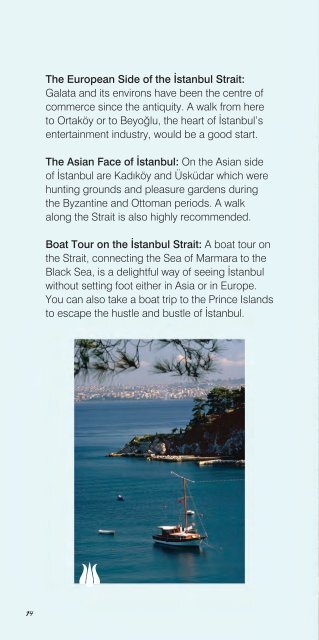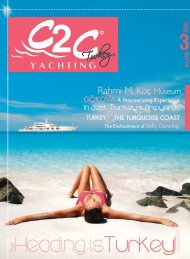istanbul - C2C
istanbul - C2C
istanbul - C2C
You also want an ePaper? Increase the reach of your titles
YUMPU automatically turns print PDFs into web optimized ePapers that Google loves.
<strong>istanbul</strong><br />
hills; the original settlement area of İstanbul was<br />
surrounded on three sides by the Sea of Marmara<br />
and the Golden Horn, while Rome was surrounded<br />
by the River Tiber; the layout of both cities looks<br />
like a scalene triangle. Perhaps those features were<br />
influential in choosing the location of ‘New Rome’.<br />
However, physical similarities were not deemed<br />
enough, and so every resource of the empire was<br />
drawn up to enhance the magnificence of the new<br />
city.<br />
Byzantium was in fact a continuation of Rome, and<br />
the Byzantines called themselves ‘Romans’ even<br />
until the day their empire came to an end. Yet there<br />
was a significant difference between the Byzantines<br />
and their ancestors: Christianity. In Byzantium,<br />
Roman temples were replaced with churches.<br />
Displaying unique examples of Byzantine painting<br />
and architecture, these buildings were scattered<br />
across the historical peninsula as well as in other<br />
parts of İstanbul. Some of the most important<br />
Byzantine masterpieces in İstanbul are public<br />
buildings such as the hippodrome, water cisterns,<br />
palaces, thoroughfares and public squares and the<br />
city walls.<br />
The identity of İstanbul that began to be formed<br />
by the Byzantines was further shaped during the<br />
period of Ottoman Empire.<br />
7



